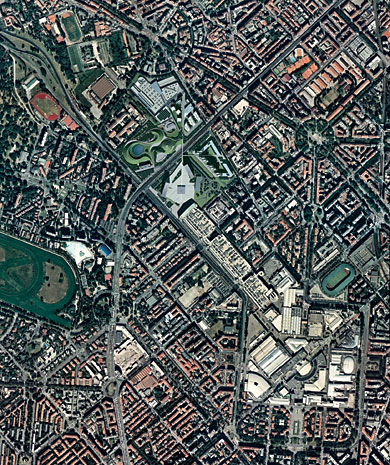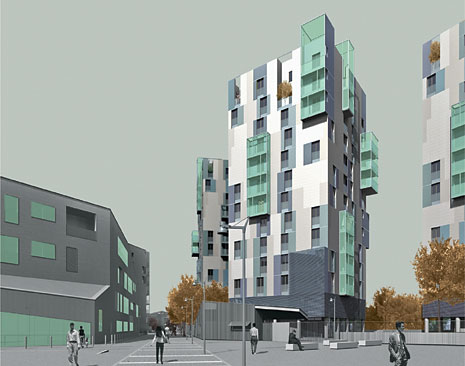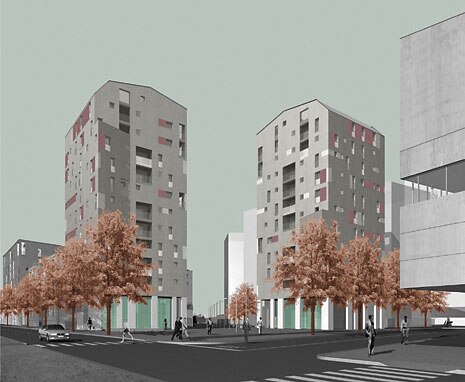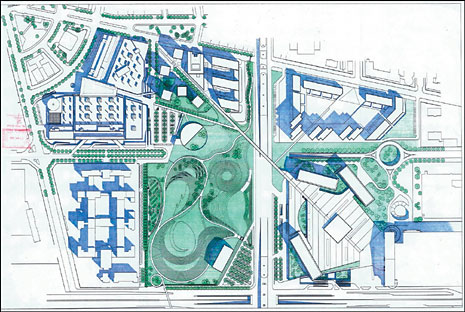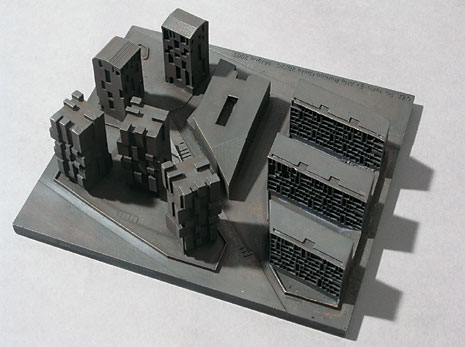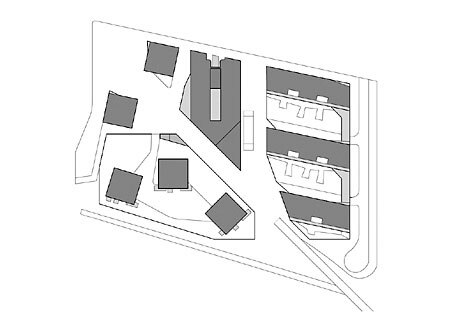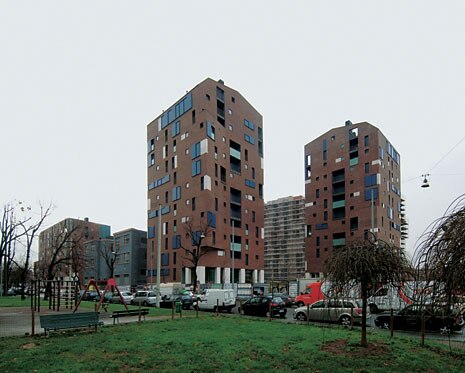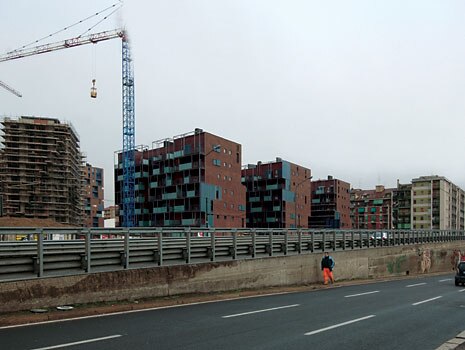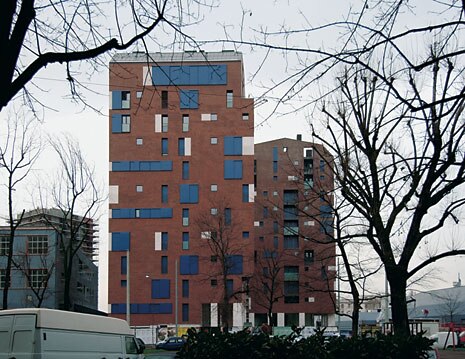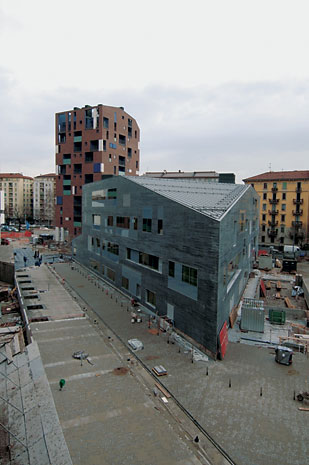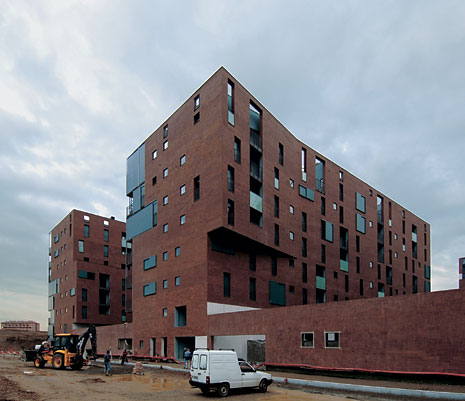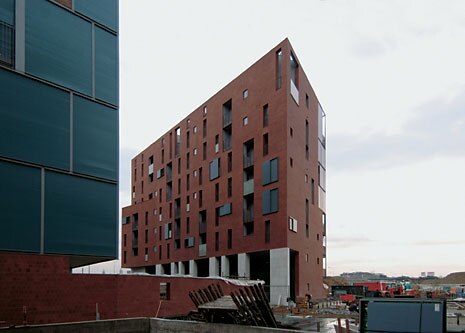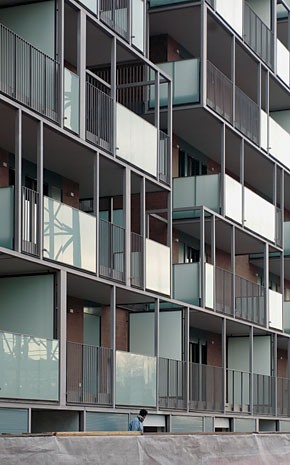Luca Molinari
On the edge of the city, in a strategic area where Milan has been trying ever since the 1930s to forge itself an original and contradictory image of modernity (from the green Milan project to the QT8 and to Bottoni’s Monte Stella, right up to the recent CityLife competition and Rho-Pero trade fair complex by Massimiliano Fuksas), an architectural and urban fragment is being slowly built. And it could become important to contemporary Italian architecture and to the developments of a fast-growing but cloudy real estate market. The area formerly occupied by the Alfa Romeo factory at Portello, wedged between the QT8 and the fair, was reappraised towards the end of the 1990s by Gino Valle, who designed its masterplan. Summoned later to work on it were Valle himself, who did the first work on a shopping centre, followed by Cino Zucchi and Guido Canali for the residence and Charles Jencks with Andreas Kipar and Land for the urban park. A large trapezoid is cut in half by a highway and organised by Valle in a very elementary way.
Four sectors, one occupied by the park, and the others allocated to housing, both free and subsidised, are linked by diagonal pedestrian paths relate to the equipped axis via a bridge. The first completed housing unit, designed by Cino Zucchi, is located behind the shopping centre whose outsized central portico launches one of the pedestrian trajectories to define the outer limit of the block facing the park. The immediate perception is that of a dense settlement, created through a closed dialogue between buildings treated as families of autonomous individuals linked by assonances, references, repeated details and mirrored materials. The architect’s initial intention, to maintain and reconstruct a form of multiple urban dialogue with the different fragments of city which it schizophenically faces, seems clear: a traditional urban front on Via Traiano; a near right angle corner which on one side faces the back of the shopping compartment, and on the other the void formed by the new park; and a fourth side which instead confronts the noisy equipped axis of Viale Serra.
Zucchi’s choice is that of a light and polyphonic story. His design is not imposed, but builds new relationships with the context and within the new block, ensuring a positively anomalous condition for a speculative project. Standing out at the centre of the complex due to its mass and density is the ex-canteen converted into offices. The slice of original facade on Via Traiano having being salvaged, the rest of the building that follows, wedged in as far as the centre of the block, is treated with a cladding in long slabs of horizontal Cardoso hewn stone and with glass and aluminium frames.
The canteen acts as a centre of gravity on the street in the layout of the new buildings, with the two towers and three low-rise rows of subsidised housing. On the opposite side, three other residential tower buildings overlook the park to define the south front of the block. All the fronts are treated in a dual narrative key, extended in continuous, skilful variations on the theme: a harder and more closed front towards the city and a second, resolved with a very deep and complex system of loggias that open onto the park and transform a plain treatment of the facades into an autonomous, porous volume.
The remainders in the play of openings and cobalt blue frames, the thoughtful arrangement of the facades in the counterpoints between the decolorised tile and the white Trani stone, the sophisticated treatment of the loggias in the recesses that let light into the inner rooms of the apartments, point to the architect’s conscious desire to sharpen a formal idiom in which inspiration received from Caccia Dominioni, Asnago and Vender but also from Bottoni at the QT8 and at the Harar district, is combined with more recent Dutch and German housing experiences.
This is a path followed obsessively throughout Zucchi’s architectural career, in his effort to restore form and dignity to contemporary middle class living (one need only observe the quality of his subsidised buildings). At the same time he seeks to give convincing answers to the possibility of working on the city by working on a medium scale and controlling its fragments. This can be found in the Junghans project in Venice and is further enriched here with a fundamental peculiarity: namely, that the whole block maintains a care and control of details and of the ground floor elements, from the porters’ lodges to the benches, from the enclosures of the various residential areas and to the ratio of greenery to roads and paths.
This seems intended to indicate a goal necessary to residential urban architecture, be it public or private: the reimbursement of that dramatic rift between the inner space of the home and the abandonment of the quality of public space that has alas marked the growth of Italian cities since the 1960s. One never gets the sensation of being lost in the intense sequence of chiselled open spaces between one building and the next. Instead, they are built on a continuous perception of the surrounding urban landscape, and on the pleasure of discovering new glimpses and unexpected perspectives.
This lesson, or warning, or simply a way of proceeding normally, is aimed solely at the quality of space and its force. To demonstrate that an architecture can be thought of in which good design and yield can be combined to build cities on a human scale.
Luca Molinari, architect and critic, curator of the architecture section at the Milan Triennale (2000-2004); associate professor of History of Contemporary Architecture at the Seconda Università in Naples; winner of the Ernesto Rogers critics’ prize at the X Venice Biennale of Architecture.
